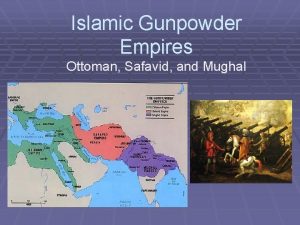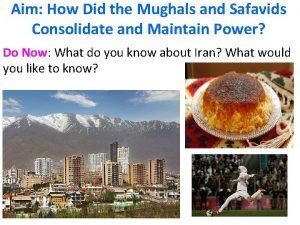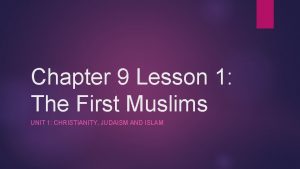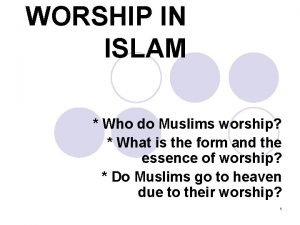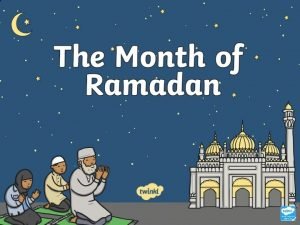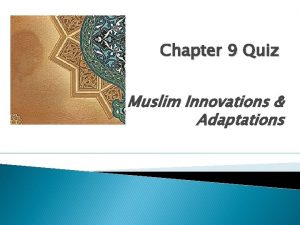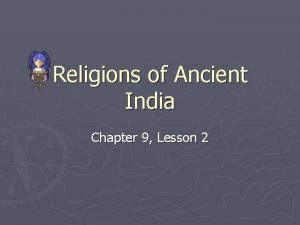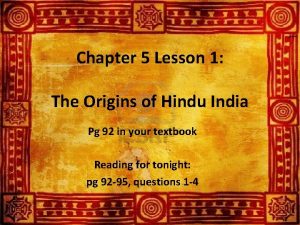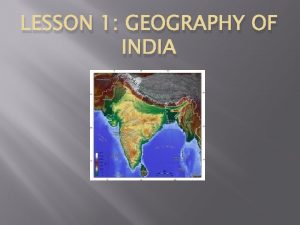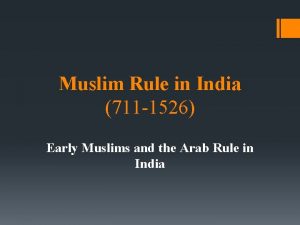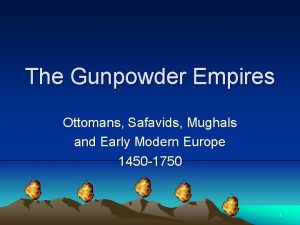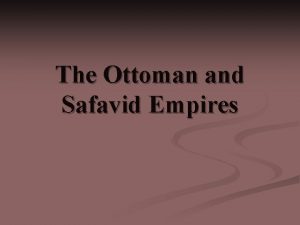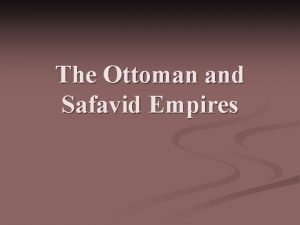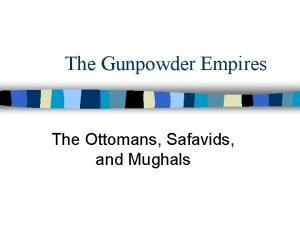Muslims and Mughals in India In this lesson














- Slides: 14

Muslims and Mughals in India In this lesson, students will be able to define the following terms: Sultanates Mughals Akbar the Great Shah Jahan Taj Mahal E. Napp

In the 11 th and 12 th centuries, Muslims invaded India and established Sultanates. E. Napp

Sultanates • In the 11 th and 12 th centuries, Muslims invaded India and developed independent kingdoms in northern India known as Sultanates. • The most important Sultanate was established at Delhi. • The Delhi Sultanate ruled for 300 years. E. Napp

At the end of the 14 th century, the Delhi Sultanate was destroyed by Tamerlane. E. Napp

Tamerlane • Tamerlane and his soldiers invaded the Delhi Sultanate. • They destroyed the city of Delhi at the end of the 14 th century. • Tamerlane was a descendant of the Mongols. He slaughtered the inhabitants of Delhi. E. Napp

In 1526, the Mughal Empire was founded. E. Napp

The most famous Mughal ruler was Akbar the Great. E. Napp

Akbar the Great • The most famous Mughal ruler was Akbar the Great (1542 -1605). • Akbar the Great promoted religious toleration throughout his Empire. • He was also a great patron of the arts. E. Napp

The majority of Indians are Hindus. However, the Muslim ruler, Akbar the Great, treated Hindus fairly and respectfully. E. Napp

Shah Jahan • Akbar’s grandson, Shah Jahan (16281658), in contrast, showed little sympathy for Hindus. • Shah Jahan ordered the destruction of many Hindu temples. • During the reign of Shah Jahan, Hindus were persecuted. E. Napp

Shah Jahan ordered the building of the Taj Mahal. E. Napp

The Taj Mahal • Shah Jahan built many palaces, fortresses, and mosques to glorify his reign. • His most famous building was the Taj Mahal. • The Taj Mahal was built as a memorial for his beloved wife. E. Napp

After the death of Shah Jahan, the Mughal Empire began to weaken. E. Napp

Questions for Reflection: • What was the Delhi Sultanate and what happened to it? • Who were the Mughals? • Why was Akbar the Great considered a great ruler? • Compare and contrast Akbar the Great and Shah Jahan. • Why did Shah Jahan order the building of the Taj Mahal? E. Napp
 Islamic gunpowder empires ottomans safavids and mughals
Islamic gunpowder empires ottomans safavids and mughals How did the mughals consolidate their power
How did the mughals consolidate their power Lesson 1 the first muslims
Lesson 1 the first muslims Who do muslims worship
Who do muslims worship Good things to do during ramadan
Good things to do during ramadan Why was polo a popular sport among wealthy muslims
Why was polo a popular sport among wealthy muslims What do muslims believe in
What do muslims believe in 10 pillars of islam
10 pillars of islam Lesson 2 religions of ancient india
Lesson 2 religions of ancient india Chapter 9 lesson 1 ancient india
Chapter 9 lesson 1 ancient india Chapter 5 lesson 1 origins of hindu india
Chapter 5 lesson 1 origins of hindu india Continent of india
Continent of india India seeks self rule
India seeks self rule Lesson 2: india seeks self-rule
Lesson 2: india seeks self-rule What is micro lesson plan
What is micro lesson plan
